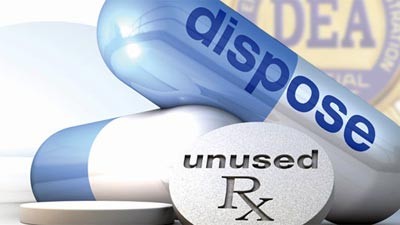The nation’s campaign to combat drunk driving continues to make our roads safer, but use of marijuana and prescription drugs is increasingly prominent on the highways, creating new safety questions, according to a pair of ground-breaking studies released this week by the Department of Transportation’s National Highway Traffic Safety Administration.
One study, the latest version of NHTSA’s Roadside Survey of Alcohol and Drug Use by Drivers, found that the number of drivers with alcohol in their system has declined by nearly one-third since 2007, and by more than three-quarters since the first Roadside Survey in 1973. But that same survey found a large increase in the number of drivers using marijuana or other illegal drugs. In the 2014 survey, nearly one in four drivers tested positive for at least one drug that could affect safety.
“America made drunk driving a national issue and while there is no victory as long as a single American dies in an alcohol-related crash, a one-third reduction in alcohol use over just seven years shows how a focused effort and cooperation among the federal government, states and communities, law enforcement, safety advocates and industry can make an enormous difference,” NHTSA Administrator Mark Rosekind said in a news release. “At the same time, the latest Roadside Survey raises significant questions about drug use and highway safety. The rising prevalence of marijuana and other drugs is a challenge to everyone who is dedicated to saving lives and reducing crashes.”
The National Roadside Survey, conducted five times during the last 40 years, is a completely voluntary, anonymous survey that gathers data in dozens of locations across the country from drivers who agree to participate. Drivers are alerted by multiple roadside signs that a voluntary survey site is ahead, and researchers gather data from those who volunteer. Drivers are notified that the survey is completely voluntary and that collected information is entirely anonymous. NHTSA has worked with research experts, law enforcement agencies and privacy advocates to refine procedures and address any potential concerns.
The latest edition of the survey shows that the prevalence of alcohol use by drivers continues to drop. About 8 percent of drivers during weekend nighttime hours were found to have alcohol in their system, and just over 1 percent were found with 0.08 percent or higher breath alcohol content – the legal limit in every state. This is down by about 30 percent from the previous survey in 2007 and down 80 percent from the first survey in 1973.
But even as drinking and driving continues to fall, use of illegal drugs or medicines that can affect road safety is climbing. The number of weekend nighttime drivers with evidence of drugs in their system climbed from 16.3 percent in 2007 to 20 percent in 2014. The number of drivers with marijuana in their system grew by nearly 50 percent.
A second survey, the largest of its kind ever conducted, assessed whether marijuana use by drivers is associated with greater risk of crashes. The survey found that marijuana users are more likely to be involved in accidents, but that the increased risk may be due in part because marijuana users are more likely to be in groups at higher risk of crashes. In particular, marijuana users are more likely to be young men – a group already at high risk.
This was the most precisely controlled study of its kind yet conducted, but it measured the risk associated with marijuana at the levels found among drivers in a large community. Other studies using driving simulators and test tracks have found that marijuana at sufficient dosage levels will affect driver risk.
Jeff Michael, NHTSA’s associate administrator for research and program development, said, “Drivers should never get behind the wheel impaired, and we know that marijuana impairs judgment, reaction times and awareness. These findings highlight the importance of research to better understand how marijuana use affects drivers so states and communities can craft the best safety policies.”
The study, conducted in Virginia Beach, Va., gathered data over a 20-month period from more than 3,000 drivers who were involved in crashes, as well as a comparison group of 6,000 drivers who did not crash. The study found that drivers who had been drinking above the 0.08 percent legal limit had about 4 times the risk of crashing as sober drivers and those with blood alcohol levels at 0.15 percent or higher had 12 times the risk.
“Researchers have developed a deep body of knowledge about the link between drinking, driving and risk. We know drunk driving kills,” Rosekind said. “The combined message of these two surveys is that our work to understand and combat drunk driving is paying off, but that we have much to learn about how illegal drugs and prescription medicines affect highway safety – and that developing that knowledge is urgent, because more and more drivers have these drugs in their systems.”
NHTSA plans a series of additional studies to further understand the risk of drugged driving, including the Washington State Roadside Survey, which will assess risk in a state where marijuana has been legalized, and a simulator study with the National Institute on Drug Abuse to assess how drivers under the influence of drugs behave behind the wheel.










